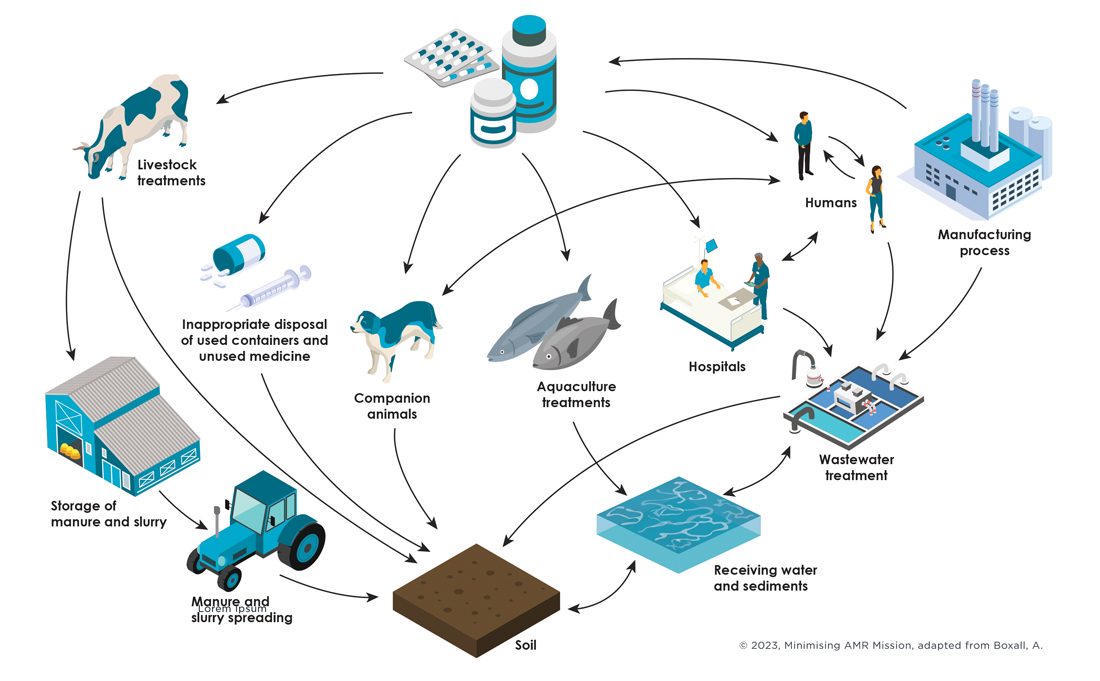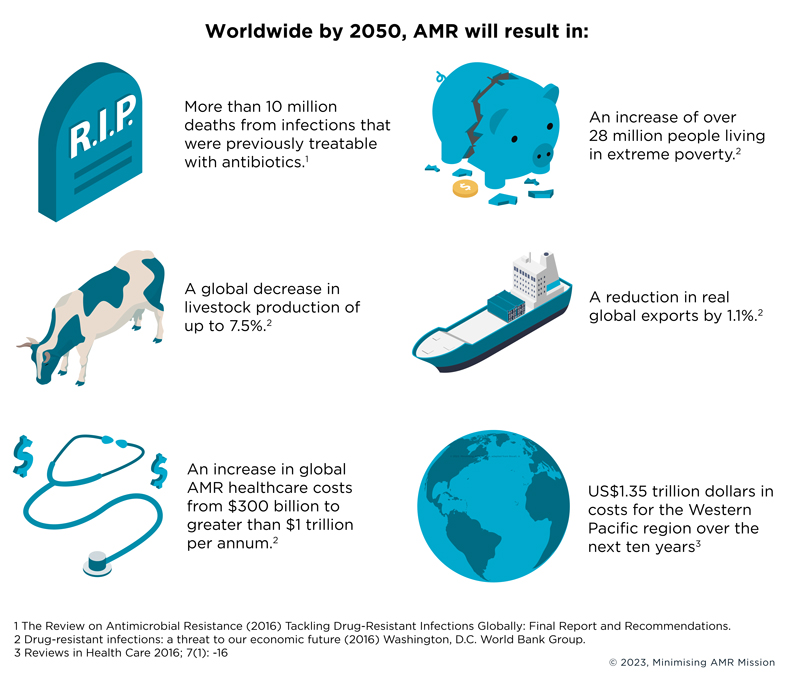Gaining a One Health perspective on removing antimicrobial residues from water

An often-overlooked aspect of antimicrobial resistance (AMR) is its emergence and spread in the environment, particularly in water sources.
Antimicrobial contaminants stemming from healthcare facilities, domestic sewerage, agricultural activities, and livestock run-off all have the potential to seep into natural waterways.
Yet there is no national monitoring of antimicrobials in groundwater, urban stormwater or drinking water.
The document presents four thematic recommendations that highlight advocacy, leadership, engagement, and monitoring initiatives.
The White Paper, Measuring, Managing, Mitigating: gaining a One Health perspective on removing antimicrobial residues from water, formulated these recommendations through rigorous discussions held during a government and industry roundtable in Canberra earlier this year.
The meeting brought together over 20 organisations from government, industry, academia, and the not-for-profit sector.
The workshop was co-presented by the Australian Government Department of Agriculture, Fisheries and Forestry, the CSIRO-initiated Minimising AMR Mission, SAAFE CRC, the Australian Antimicrobial Resistance Network and Shawview Consulting.
Participant discussions focused on AMR and its presence in the environment, namely water systems, and the implications for human and animal health, the environment, and the industry.
Download the white paper
A looming public health crisis

Australia is experiencing a rising threat from antimicrobial resistance (AMR), where bacteria and other microorganisms are able to survive in the presence of drugs intended to eliminate them, such as antibiotics, largely due to over-exposure, commonly because of misuse or overuse.
AMR undermines the effectiveness of medicines and makes infections more difficult to treat.
It is considered a looming global health crisis, recently designated one of the top 10 public health threats facing humanity by the World Health Organization (WHO).
Loss of effective antimicrobial treatments would be catastrophic for human and animal health.
AMR can lead to the emergence of “superbugs” that are resistant to all available treatments and can cause life-threatening infections.
Without preventative action it is estimated that, by 2050, AMR could cause more than 10 million deaths per year and cost the global economy US$100 trillion.
Discrete actions
Among the recommendation areas, a series of discrete actions that should be undertaken are identified, including:
- The establishment of national standards defining maximum permissible levels of antimicrobials.
- The development of monitoring systems to track antimicrobials in water systems.
- The appointment of an AMR Emissary for Australia who would enhance awareness and promote action on AMR issues locally and internationally.
The recommendations highlight where Australia can focus efforts to have the greatest impact on minimising the emergence, spread and impact of antimicrobial resistance in the environment.
Gaining a One Health perspective on removing antimicrobial residues from water
There are many routes by which antimicrobials can enter the environment. This graphic shows some of the predominant paths including antimicrobial products and residues passing through livestock, companion animals, aquaculture, hospitals, and humans through to wastewater treatment, receiving water, farm processes and soil. The graphic also illustrates that some of these paths work in both directions, such as humans and hospitals, soil and water, humans and animals and humans to humans.
An often-overlooked aspect of antimicrobial resistance (AMR) is its emergence and spread in the environment, particularly in water sources.
Antimicrobial contaminants stemming from healthcare facilities, domestic sewerage, agricultural activities, and livestock run-off all have the potential to seep into natural waterways.
Yet there is no national monitoring of antimicrobials in groundwater, urban stormwater or drinking water.
The document presents four thematic recommendations that highlight advocacy, leadership, engagement, and monitoring initiatives.
The White Paper, Measuring, Managing, Mitigating: gaining a One Health perspective on removing antimicrobial residues from water, formulated these recommendations through rigorous discussions held during a government and industry roundtable in Canberra earlier this year.
The meeting brought together over 20 organisations from government, industry, academia, and the not-for-profit sector.
The workshop was co-presented by the Australian Government Department of Agriculture, Fisheries and Forestry, the CSIRO-initiated Minimising AMR Mission, SAAFE CRC, the Australian Antimicrobial Resistance Network and Shawview Consulting.
Participant discussions focused on AMR and its presence in the environment, namely water systems, and the implications for human and animal health, the environment, and the industry.
Download the white paper
A looming public health crisis
This infographic shows six key stats, occupied by a simple icon for each. The text reads: Worldwide by 2050, AMR will result in:
Australia is experiencing a rising threat from antimicrobial resistance (AMR), where bacteria and other microorganisms are able to survive in the presence of drugs intended to eliminate them, such as antibiotics, largely due to over-exposure, commonly because of misuse or overuse.
AMR undermines the effectiveness of medicines and makes infections more difficult to treat.
It is considered a looming global health crisis, recently designated one of the top 10 public health threats facing humanity by the World Health Organization (WHO).
Loss of effective antimicrobial treatments would be catastrophic for human and animal health.
AMR can lead to the emergence of “superbugs” that are resistant to all available treatments and can cause life-threatening infections.
Without preventative action it is estimated that, by 2050, AMR could cause more than 10 million deaths per year and cost the global economy US$100 trillion.
Discrete actions
Among the recommendation areas, a series of discrete actions that should be undertaken are identified, including:
- The establishment of national standards defining maximum permissible levels of antimicrobials.
- The development of monitoring systems to track antimicrobials in water systems.
- The appointment of an AMR Emissary for Australia who would enhance awareness and promote action on AMR issues locally and internationally.
The recommendations highlight where Australia can focus efforts to have the greatest impact on minimising the emergence, spread and impact of antimicrobial resistance in the environment.
